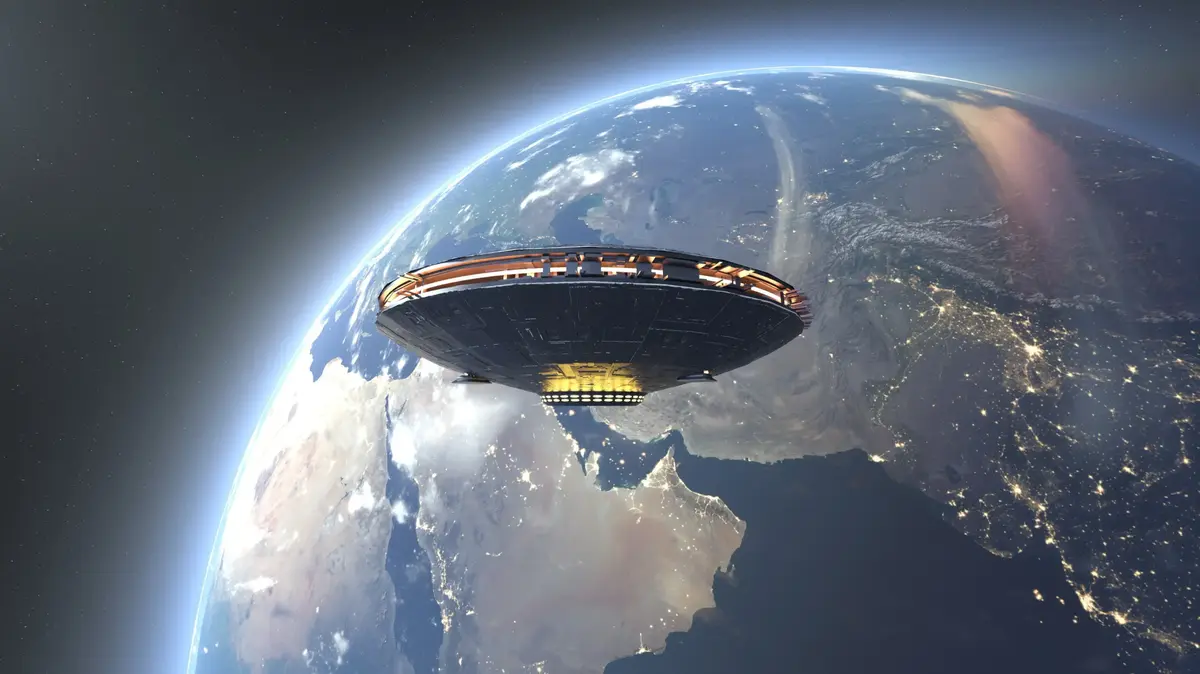To get an idea of the difficulty of sending a ship into space, we can use data from our day-to-day vehicles.
A normal car takes about 50 kilograms of gasoline to do about 600 kilometers at top speeds of 120 kilometers per hour.
An Airbus A350 plane uses about 90 tons of fuel to travel 15,000 kilometers at speeds of up to 1,000 kilometers per hour.
In other words, to travel a distance 25 times greater, an airplane uses 1,800 times more fuel, being able to travel 8 times faster than a car.
Conclusion: the amount of fuel needed to reach higher and higher speeds increases exponentially.
To launch a ship into space we have to resort to the famous parabolic shot that we learn at school, but making it go up from launch and then not go down.
The speed needed to insert a contraption into a low orbit around the Earth is 28,800 kilometers per hour.
But if the goal is to completely escape from Earth, the necessary speed increases to almost 40,000 kilometers per hour.
This is 40 times faster than an A350.
The fuel required, even with a much more powerful engine than the plane's, is tremendously large.
When the space race was still nothing more than a dream, at the end of the 19th century, Konstantin Eduardovich Tsiolkovsky described it with equations.
He studied the physical limitation of a contraption, with a simple motor, to reach a speed high enough to escape the Earth's gravitational pull and orbit the Earth.
This Russian physicist determined that the bigger we want to put into orbit, the more time it will take for the engine to accelerate the system.
And if the engine has to run longer, then it needs more fuel, which makes it heavier, and then the engine has to run even longer.
Furthermore, if we want to launch not only that engine and its fuel, but also a payload for something else (like visiting the Moon), there will be a part of the mass of the rocket that does nothing to help gain speed,
More information
The most powerful rockets in history speed up the race to the Moon |
infographic
Ultimately, Tsiolkovsky wrote the so-called rocket equation, which tells us that the problem of accelerating a rocket to escape Earth, or at least orbit around it, easily reaches a dead end, since the fuel required scales exponentially with respect to the speed you want to gain.
With these physics and engineering concepts in mind, space exploration had to pull off several tricks to be viable.
The first was provided by Tsiolkovsky himself, who did not stop at writing the rocket equation, but also sought the solution so that our dreams of traveling beyond our planet could come true.
And he developed the theory that we know today as a multistage rocket: a rocket that releases ballast in several stages, each of them propelled by a different engine.
The 'Ariane 5' rocket.ESA
Take the example of the Ariane 5 rocket that launched the interplanetary spacecraft
Juice
two weeks ago .
At launch, an extremely powerful prime mover aided by two other solid-fuel boosters accelerated the rocket and its payload to 9,000 kilometers per hour in about two minutes.
At that moment, at a height of about 60 kilometers, it released the two thrusters, which, exhausted and already useless (they are not reused), only contributed dead mass.
By getting rid of that mass, and with a much thinner atmosphere that doesn't slow the rocket down much, Ariane 5 was able to continue accelerating and reaching 25,000 kilometers per hour, at an altitude of about 150 kilometers.
And then a second stage was launched, which for more than 15 minutes accelerated the rocket to more than 32,000 kilometers per hour.
Leaving Earth based on propulsion stages, the first physical trick to solve the main problem of space exploration from the Earth's surface.
Quite different from what you see in movies like
Independence Day
or shows like
V
, with a ship calmly rising above the ground to reach the orbiting mothership, we are a long way from such propulsion.
The 'V' series mother ship.
The problem of mass (and therefore fuel) limits also shows up in another trick of space exploration.
It was first devised by a Ukrainian, Yuri Kondratyuk, who a little over a century ago gave many more ideas for space exploration.
The matter is related to a false idea that we have been told in many movies.
In reality, the ships that have gone to the Moon, or the probes that have gone to other planets such as Mars or Jupiter, do not go with their engines running continuously.
They only turn them on at very precise moments and for a few seconds (at most, for a few minutes) on trips that last years.
A ship in outer space is not a car, it does not move under the impulse of an engine, but the gravitational field in which it is immersed does most of the work.
You cannot spend years with an engine running traveling hundreds or billions of kilometers.
But if you let yourself be carried by gravity, you will go where it tells you, so we need some trick to go to our preferred destination.
Let's imagine driving your car at more or less constant speed and taking a curve.
If we accelerate too much inside the corner, we will most likely be thrown off.
This is what space probes that intend to travel to distant planets or satellites do.
Once they are in a stable orbit around the Sun, they can come close to a massive object like the planet Venus.
When approaching, space-time is curved (due to the gravity of the planet) and the trajectory of the probe is modified, also gaining speed.
And if at the right moment it starts its engines, like the car accelerating around the curve, the probe will easily enter another much more open and fast orbit, which will take it to the far reaches of the Solar System.
A space legend with which we are deceived in movies: the ships that travel to other planets do not go with their engines running continuously.
It's not a car;
the gravitational field does most of the work
Beginning of 'Star Wars' (George Lucas, 1977): real ships do not go with their engines running.20th Century Studios
The trick doesn't just work by starting engines.
A space probe can just get a gravitational nudge.
Imagine Planetary Explorer
Juice
orbiting the Sun in a closed orbit, an ellipse, or a nearly circumference like Earth's orbit.
If there was nothing else, it would stay there.
But if we do our math right and time the ship's trajectory with that of a planet, it will give the probe an extra boost.
The planet will continue its course without realizing it, but effectively it will have given the probe some energy, an insignificance for the star.
The result for our ship, however, will be to pick up speed and move into a more open orbit, even faster than escape velocity from the Solar System.
Let them tell
Voyager
!
Juice
will play these gravity pulls for six years.
The problem will then be to stop the space probe if we want it to stop to explore a distant planet: there you can play cat and mouse and approach the star from the opposite side, so that its gravity slows down the probe and makes it fall to a less energetic orbit.
With limited thruster ignition, we can even go into orbit around the planet, something we have already done on missions like
Galileo
,
Cassini
, or
Juno
.
It's what
Juice
will do with Jupiter first and then Ganymede, its largest moon.
The Juno probe, around Jupiter.NASA
In a mission like
Juice
, we see how problems derived from our technological limitations are solved with basic science knowledge, almost from school, because they involve (at least, in a first approximation) things as simple as universal gravitation and conservation of linear momentum.
And they allow us to visit distant worlds!
Cosmic Void
is a section in which our knowledge about the universe is presented in a qualitative and quantitative way.
It is intended to explain the importance of understanding the cosmos not only from a scientific point of view but also from a philosophical, social and economic point of view.
The name "cosmic vacuum" refers to the fact that the universe is and is, for the most part, empty, with less than one atom per cubic meter, despite the fact that in our environment, paradoxically, there are quintillions of atoms per meter cubic, which invites us to reflect on our existence and the presence of life in the universe.
The section is made up of
Pablo G. Pérez González
, a researcher at the Center for Astrobiology, and
Eva Villaver
, a researcher at the Center for Astrobiology.
You can follow
MATERIA
on
,
and
, or sign up here to receive
our weekly newsletter
.



/cloudfront-eu-central-1.images.arcpublishing.com/prisa/ME2T7R4475BYDHT2ASGCOZNAGQ.jpg)











